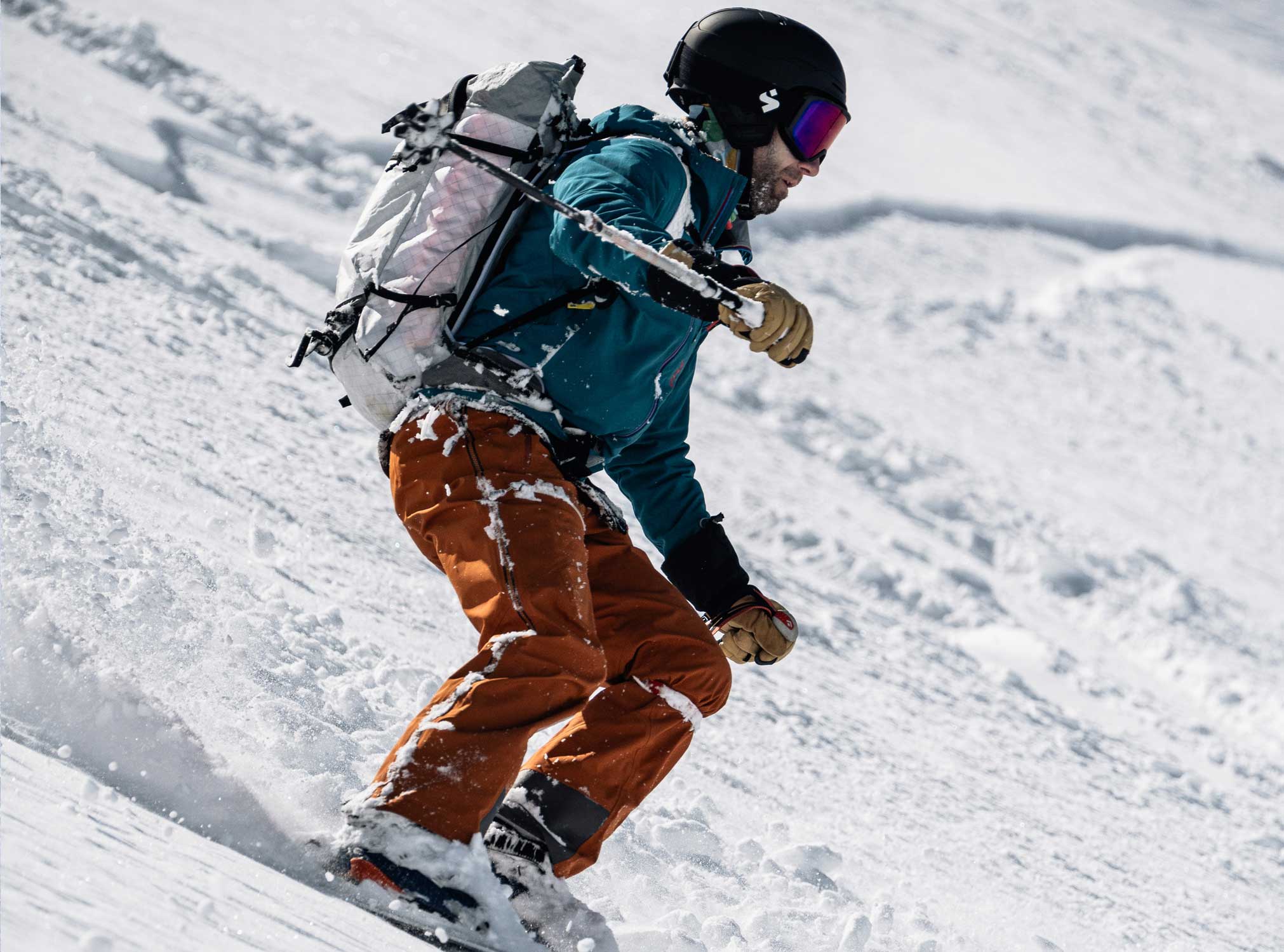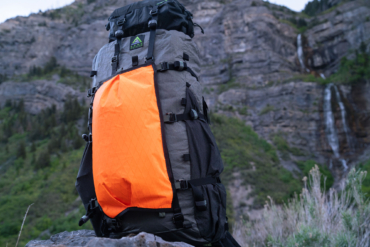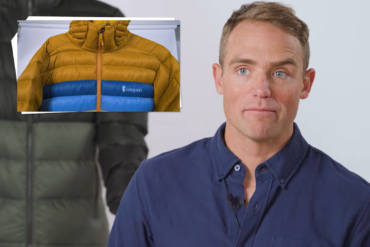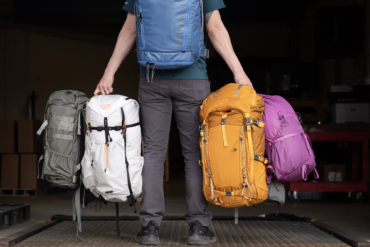A video review based on this article is here: ‘Fast & Light’ Gear Episode. See GearJunkie’s full episode, ‘Hardest Hike in the East,’ for a live look at the Devils Path trail.
At 25 miles long the Devils Path, a route through New York’s Catskill Mountains, has earned the title of the “hardest hiking trail in the East.” It gets this name not from its length but from the vertical nature of the trail — in those 25 miles the precipitous path climbs and descends six major mountain peaks for more than 14,000 vertical feet of elevation change.

This fall, with two friends and a backpack of lightweight gear, I struck out from the Devils Path’s western terminus on a mission to hike it as fast as I could. We trekked into the darkness at 10p.m. the first day of the trip. Our plan was to hike through part of the night and finish by the following evening in a 24-hours-or-less effort.
Backpacking trips like this, often dubbed “fast and light,” are becoming common in the outdoors. Distance goals of 15 miles a day or more are attainable with today’s lighter gear. Outdoor equipment companies know this and now put much emphasis on cutting ounces and trimming products to make the essentials easier to carry in a pack.
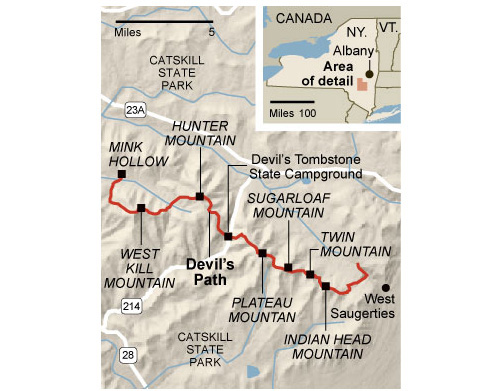
In the Catskills we attempted to embody the “fast and light” way in its extreme. Zero luxuries were toted on the trail — we did not even bring a tent. Instead, waterproof bivy bags, which pack to the size of an iPhone, would serve to protect from rain at night.
OK, one luxury: I did bring a camp pad, the Zor SHORT from Nemo. The unique inflatable pad is about an inch thick and super comfy. It rolls up almost as small as a water bottle and weighs about 10 ounces.
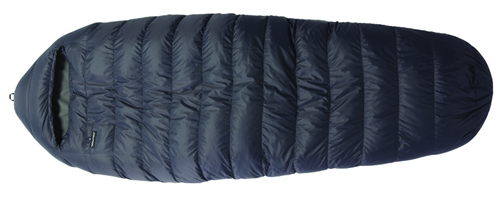
My sleeping bag, the Haven Top Bag from Therm-A-Rest, is light because of its strange design — the bag does not have a “bottom.” To save on material weight, there is a big hole in the bag where your body lies on the pad. There’s a hood, the bag wraps your body, and your feet are in the bag, but your back has no insulation under it. I slept warm in the bag on the Devils Path, where it got down to about 40 degrees at night during our trip. The down bag, rated to a minimum temp of 20 degrees, packs up small and weighs just 1 pound, 8 ounces.
Our backpacks on the trail were half the size of regular backpacking models. I used the Race Elite 25 model, a simple, frame-less design from Inov-8 Ltd. It fits close and offers 25 liters of capacity while weighing about 12 ounces when empty — very light!

One of my hiking partners, Brian Leitten, wore a test pack from Out There USA, an upstart brand by adventure-racing champ Mike Kloser of Colorado. The pack, dubbed the MS-1, is a smaller version of Out There’s AS-1, which is a pack with about a dozen pockets. The unique design, which I review here, offers quick access to food and other small items as you trek without ever removing your pack, something important when you’re trying to keep a pace all day.
Our clothing, including tights and running shirts, skewed more “aerobic” than “outdoorsy.” I wore a pair of arm-warmers, the Windbreak Sleeve model from Wigwam, which are like socks for your arms. The removable sleeves, favored by bikers and triathletes, worked wonderfully as we hiked fast, allowing for instant adjustment and temperature regulation on my bare arms.
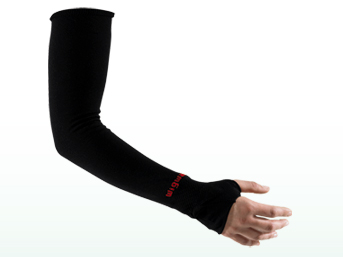
My T-shirt and tights, from Ibex Outdoor and Ortovox respectively, were both merino-wool based pieces. The shirt, Ibex’s Balance T model, and the Ortovox tights, which are a to-be-released product, each incorporate stretchy synthetic fibers to give the merino a closer and more athletic fit, though still retaining the warm-when-wet and odor-killing qualities I love with wool.
I brought a light Gore-Tex Active Shell jacket from Mammut, the Felsturm model. It was a just-in-case rain jacket, though our hike was dry. My trekking poles, the Black Diamond Z-Poles, are skinny carbon-fiber shafts, and they weigh just 5 ounces each. (My full review on the Z-Poles is here.)
Food and water are big weigh-downs on many treks. We took water from a stream after the first seven miles, purifying it not with a pump filter but with a product from Potable Aqua, the company’s chlorine dioxide tablets, which weigh essentially nothing. Our food, about 3,500 calories each, was mostly energy gels and bars and beef jerky.
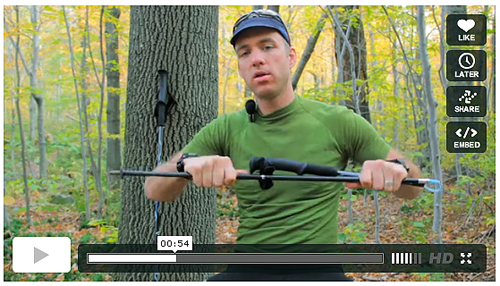
We did not bring a stove, instead we “cooked” a pack of dehydrated camp food from Mountain House with cold water for a high-calorie lunch. The cold macaroni dish was delicious enough that my trail mates fought for bites.
Instead of a bulky guidebook or a GPS device, we brought a compass and a single-page topo map. I put the topo in a “map bag,” which is essentially a slim plastic bag that makes it waterproof and durable. It fit in a pocket as we hiked fast, accessible for a glance at every trail turn.
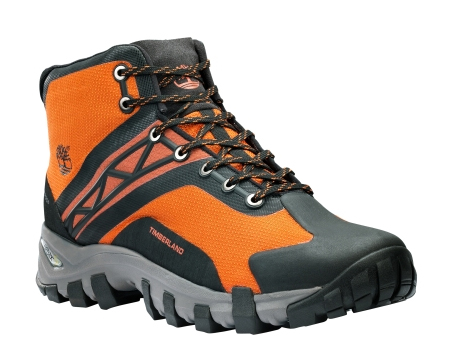
One of the videos we shot on this trek was sponsored by Timberland, and as such Brian and I hiked in the company’s new LiteTrace Mid boots. Normally, I would wear trail-running shoes for a trip like the Devils Path. I prefer trail runners’ lighter weight and flexibility. But all bias aside, the LiteTrace boots were actually great on the rocky ground in the Catskills. For miles at a stretch, the Devils Path more resembles a streambed than a hiking trail, including loose footing and water seeping through the mishmash of rocks that comprise the route. The waterproof LiteTrace boots, which at about 12 ounces a foot weigh the same as many trail shoes, protected my feet from the stones as well as the water that flowed beneath.
By the end, despite the fancy gear we were physically beat and ready to rest. The Devils Path had embodied its name and then some — it took my crew 22 hours and 52 minutes, but our fast-and-light formula had allowed us to tackle the beast that is the “hardest hiking trail in the East.”
—Stephen Regenold is editor of GearJunkie. A video review based on this article is here: ‘Fast & Light’ Gear Episode. See GearJunkie’s full episode, ‘Hardest Hike in the East,’ for a live look at the Devils Path trail.

